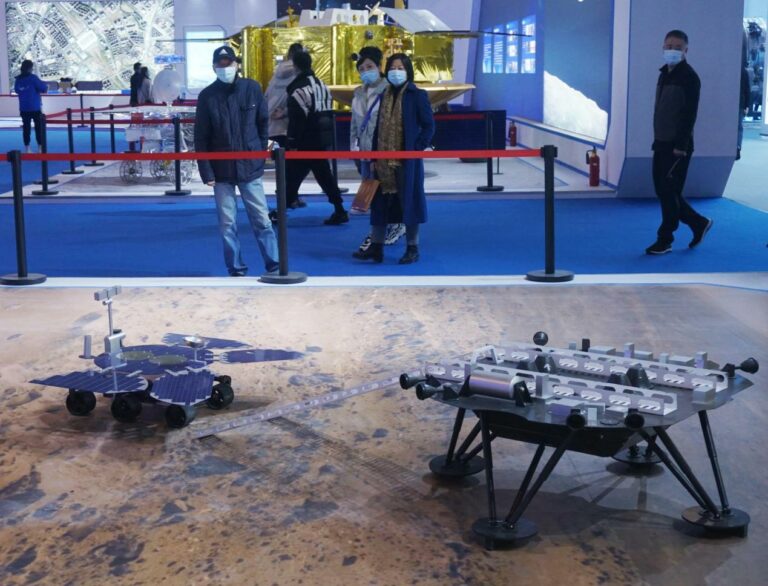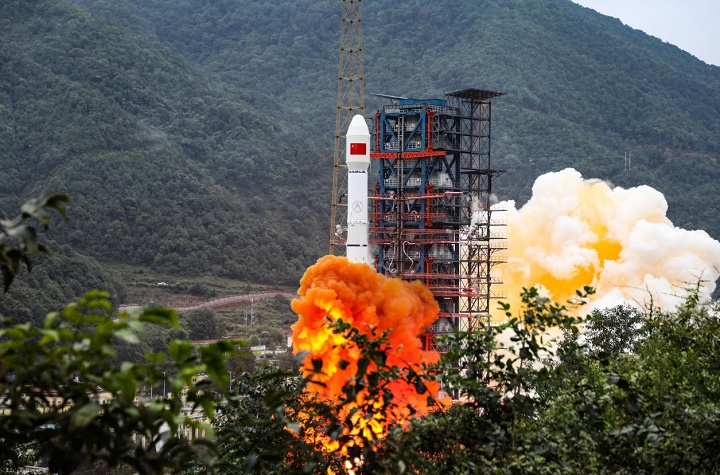
By Yu Jianbin, Feng Hua, People’s Daily
China has entered its harvest season of multiple long-term major space projects. The country has completed the construction of the global network of its BeiDou Navigation Satellite System (BDS), concluded the last step of the three-step lunar exploration program (“orbit, land, and return”), and is going to complete the three-step strategy of its manned space program this year by finishing the building of its space station.
While China’s space exploration is continuously advanced, the State Council Information Office (SCIO) released the country’s fifth white paper on the space industry in January this year. The white paper titled “China’s Space Program: A 2021 Perspective” not only gave an account of China’s achievements in the space industry in recent years but outlined the country’s development plan for the industry for the next five years and beyond, arising people’s greater interest in outer space.
The country has kicked off the construction of its Tiangong space station and plans to complete key technological research on tasks including Mars sampling and return and the exploration of the Jupiter system, continue studies and research on the plan for a human lunar landing, and develop new business models for upscaling the space economy, including travel, according to the document.
“The space industry is a critical element of the overall national strategy, and China upholds the principle of exploration and utilization of outer space for peaceful purposes,” the white paper noted.
Since 2016, China’s space industry has made rapid and innovative progress, manifested by a steady improvement in space infrastructure, the completion and operation of the BDS, the completion of the high-resolution earth observation system, steady improvement of the serviceability of satellite communications and broadcasting, the conclusion of the last step of the three-step lunar exploration program, the first stages in building the space station, and a smooth interplanetary voyage and landing beyond the earth-moon system by Tianwen-1, followed by the exploration of Mars, said the white paper, adding that these achievements have attracted worldwide attention.
Over the past five years, China’s space industry has worked together with its global counterparts to implement the UN 2030 Agenda for Sustainable Development and jointly promote the role of space technology in facilitating sustainable development, said Wu Yanhua, deputy director of the China National Space Administration (CNSA).

China has signed about 50 cooperation agreements or Memoranda of Understanding (MoUs) in the space industry with foreign countries during the past five years, according to Wu.
China has launched the international lunar research station project together with Russia, carried out extensive international cooperation in space missions including manned spaceflight, lunar exploration project, and Mars exploration, signed cooperation agreements for the BRICS Remote-Sensing Satellite Constellation, and successfully launched the China-France Oceanography Satellite and the China-Italy Electromagnetic Monitoring Experiment Satellite, Wu said.
The country has also pressed ahead with international standardization of the BeiDou system, which has been included in the standard systems of international organizations in fields including civil aviation and maritime affairs, according to the official.
During the past five years, data of the Chinese Gaofen-1 and Gaofen-6 remote sensing satellites were offered free of charge about 550,000 times in 158 countries and regions via a cloud platform, five Chinese satellites and three Chinese constellations joined the mechanism of the International Charter on Space and Major Disasters, and data of China’s Fengyun meteorological satellites were provided for 121 countries and regions, Wu said.
China has helped other developing countries boost their space science and research and share the fruits of its space industry development in a multitude of ways, including providing assistance with space infrastructure construction, training professionals in the industry, and offering space observation data, he added.
From the beginning of China’s lunar exploration program in 2004 to the Chang’e-5 lunar mission bringing moon sample to earth in 2020, the country has successfully completed the three steps of orbiting, landing, and bringing back samples from the moon, said Liu Jizhong, director of the Lunar Exploration and Space Program Center of the CNSA.
During the fourth phase of the lunar exploration program, China will develop a basic model of a lunar research station, thus laying a foundation for the construction of an international lunar research station on the moon with other countries, international organizations, and partners, according to Liu.
Peaceful exploration and utilization of outer space is a common dream of humanity. Driven by the dream, more and more countries attach great importance to and vigorously boost the development of the space industry, which is expected to make a major and far-reaching impact on human society.
Against such a backdrop, China is gearing up for scaling new heights on its journey to deeper space with Chinese wisdom.










